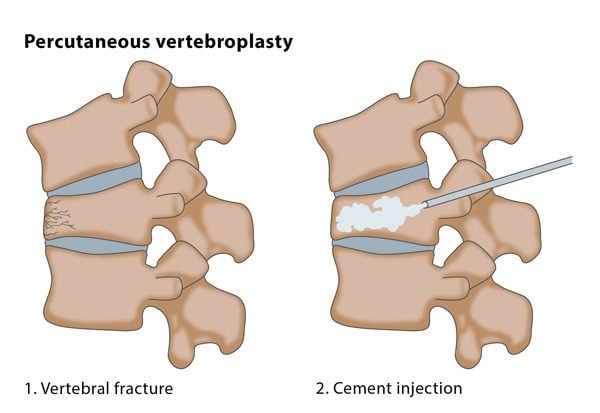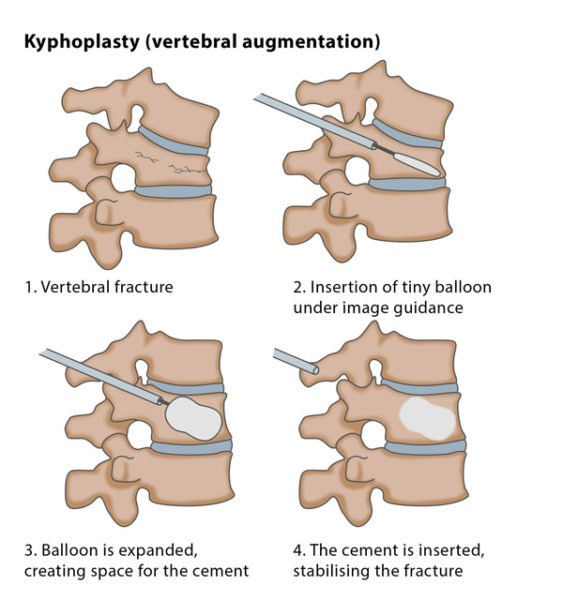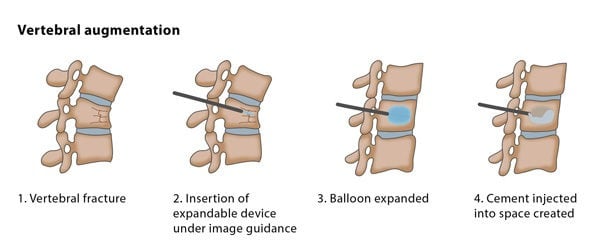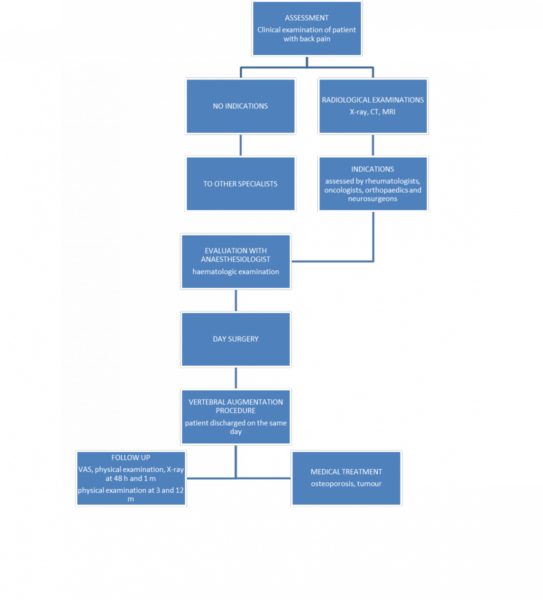Why perform it?
Vertebral augmentation can be performed to ease back pain which is caused by vertebral compressive fractures. Vertebral fractures are a common cause of pain and disability and are associated with increased mortality.
What are the risks?
A large number of studies have found vertebral augmentation to be an effective and safe way to treat vertebral fractures, especially when high-quality image guidance is used.
You may experience minor complications such as an infection, an allergic reaction or bleeding from the puncture site. You may also experience the accidental blockage of a vein in your lower back, small cement leaks in the soft tissue around the vertebrae, inflammation of part of the spinal nerve, or a small blockage in your lung.
Unfortunately, there are a number of possible severe side effects, though these are rare. Severe side effects include cement leaks into the surrounding area (a condition which requires immediate surgery), spinal cord direct lesion, which can lead to disability, and a large blockage in the lung, which can cause acute respiratory failure and death.
Flow chart for patients




